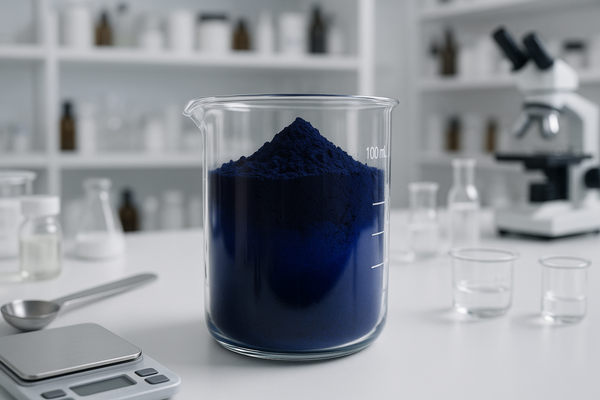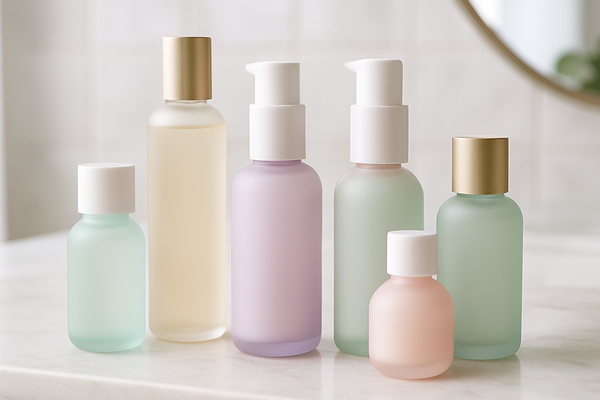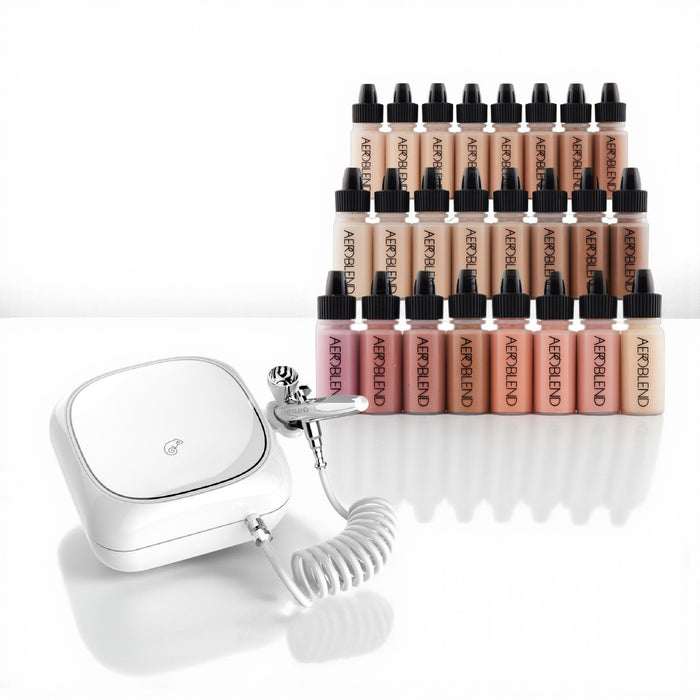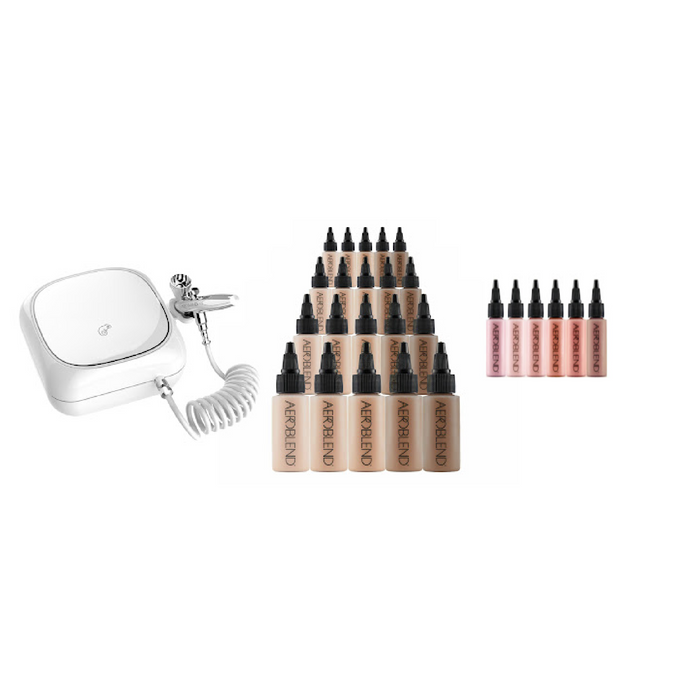
You’ve probably never thought about blue pigment when shopping for foundation - but it’s the secret ingredient behind the most natural, real-skin tones. At Aeroblend, “Blue Makes It True” isn’t just a tagline - it’s the science behind why our shades look like real skin in every light.
From Makeup Artist to Formulator
As a professional makeup artist turned cosmetic formulator, I’ve spent years studying faces. Not just their beauty, but their colors—the subtle interplay of undertones, the way light hits different depths, the complexity that makes each complexion utterly unique.
And through this journey, I discovered something that changed everything about how I approach foundation formulation: the power of blue.
The Problem with Traditional Formulation
Walk into any beauty store and you’ll find foundations that look promising in the bottle but somehow turn orange, muddy, or just “off” on your skin. This isn’t a fluke—it’s baked into how most brands create color.
The culprit? Black pigment.
For decades, the industry has leaned on black iron oxide (CI 77499) to deepen and mute shades. Need more depth? Add black. Too bright? Add black. But here’s the issue: black doesn’t just darken, it greys out color. It flattens life from the shade. On real skin, that translates to undertones that read too orange, too ashy, or simply wrong.
Think back to art class: mix black paint into a skin tone, and it instantly looks dull, lifeless, unnatural. Yet that flawed shortcut became standard operating procedure in cosmetics.
Enter Ultramarine Blue: The Game-Changer
Here’s where artistry meets science: ultramarine blue (CI 77007).
On the color wheel, blue sits opposite orange, making it orange’s complementary color. Translation: blue naturally neutralizes orange rather than amplifying it. When used in foundations, blue balances undertones instead of dragging them into pumpkin territory.
But ultramarine blue does more than just “cancel orange.” It mirrors what actually exists in human skin. The way light scatters through real skin reveals subtle blue undertones—especially in deeper and olive complexions. Without blue, you’re trying to imitate skin with half the palette missing.
Why Blue Works (The Science + Art)
From a formulation perspective, ultramarine blue brings big advantages:
-
Color Accuracy: Adds depth without warmth, unlocking true neutrals and authentic olives.
-
Versatility: Works across warm, cool, and neutral undertones without fighting temperature bias.
-
Authenticity: Produces shades that reflect the natural interplay of pigments found in real skin.
-
Proper color theory: Think about it red + yellow = orange. Adding white and black pigment to further create more skin tones will only take you so far. Blue is necessary for proper shade creation.
Put simply: blue makes it true.
Why Isn’t Everyone Doing This?
If blue is so effective, why don’t all foundations include it? The reasons are less about science and more about industry habit:
-
Old School Thinking: Many chemists don’t come from artistry backgrounds. They see pigment as a chemical equation, not a color system.
-
Artistry Disconnect: Shades are often created by swatch, not by testing on diverse human skin.
-
Cost: Ultramarine blue is pricier than black iron oxide, and cost-cutting runs deep in beauty.
-
Formulation Challenges: Blue requires coated pigments and precise balance—it’s not as easy as dumping in black.
-
Inertia: “This is how we’ve always done it” is a hard cycle to break. By 2025, though, I call it lazy formulating. (Credit where due: brands like L’Oréal and Chanel have started leading the charge.)
The Proof You Can See
Foundations formulated with ultramarine blue deliver results you can see and feel:
-
Shades that look like real skin, not makeup.
-
Truer matches across the spectrum of human undertones.
-
More natural coverage that enhances, not masks.
-
Fewer “afterthought” mixers or color correctors needed.
The Future of Foundation
As someone who bridges artistry and cosmetic science, I believe the future of foundation lies in honoring both: the technical precision of formulation and the artistic understanding of color.
Every time I add ultramarine blue to a new shade, I’m reminded why I fell in love with color in the first place. It’s not just about creating products—it’s about celebrating the diversity of human beauty with accuracy and respect.
The next time you’re searching for your perfect match, ask yourself: does this shade look like actual skin - or just like what someone thinks skin should look like?
The answer might just be in the blue.
Sources & Further Reading
-
Ultramarine blue pigment enhances foundations for North Asian complexions – L’Oréal study
-
Adding blue pigment to foundation improves tones for dark skin – University of Toledo
-
Meet Balanda Atis, L’Oréal’s Women of Color Lab Manager – Essence
-
Fast Company – The L’Oréal chemist who’s changing the face of makeup
PERSONAL AIRBRUSH MAKEUP STARTER KIT
- Regular
- $ 111.20
- Sale
- $ 111.20
- Regular
-
$ 139.00
- Unit Price
- per
PRO Airbrush Makeup Starter Kit
- Regular
- $ 169.00
- Sale
- $ 169.00
- Regular
-
$ 169.00
- Unit Price
- per
Aeroblend PRO Airbrush Makeup Studio Kit
- Regular
- $ 769.00
- Sale
- $ 769.00
- Regular
-
$ 769.00
- Unit Price
- per





